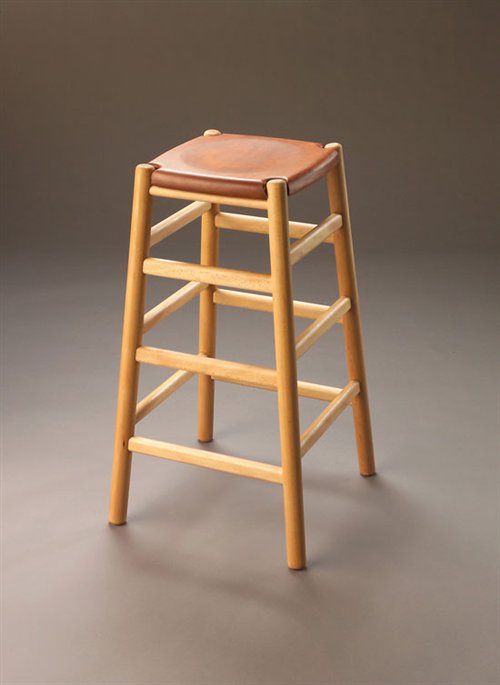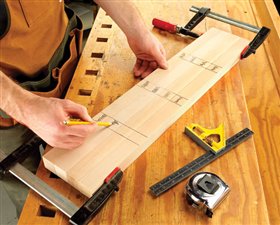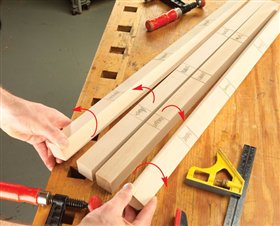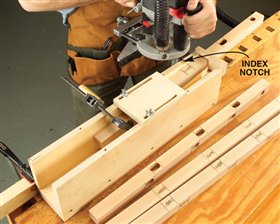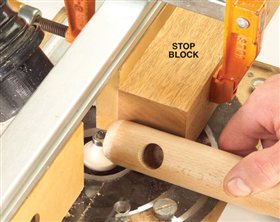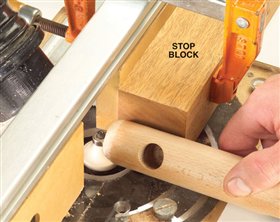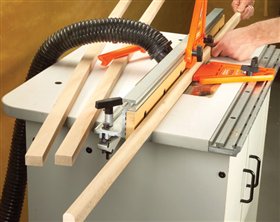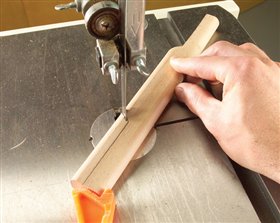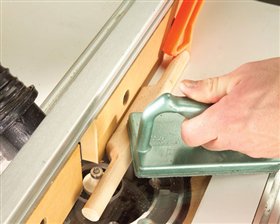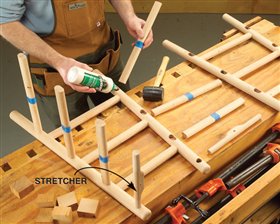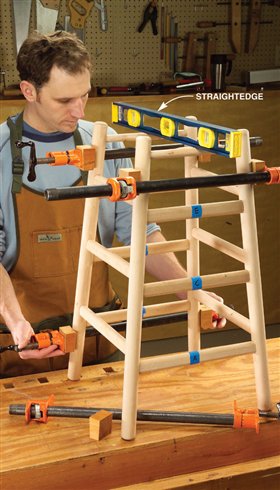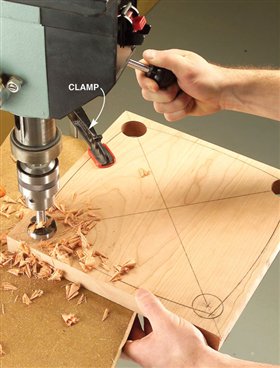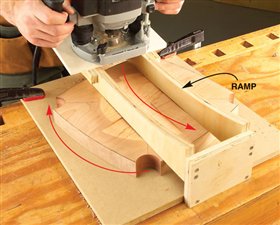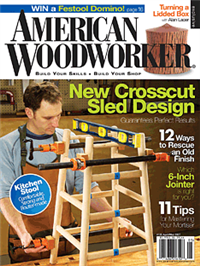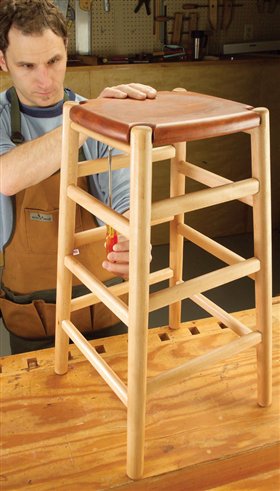We may receive a commission when you use our affiliate links. However, this does not impact our recommendations.
Kitchen Stool
Round Legs Without a Lathe
By Seth Keller
|
Few stools are as clean and elegant as this one. I built it with |
You may also like… |
This project will keep your router humming and uses
some very clever jigs to simplify and speed up construction.
It’s almost as easy to make half a dozen stools as
it is to make one. Our stool is sized for a 36-in. counter
height.
There will be a lot of parts floating around your shop as
you build this stool and a lot of mortises to keep track of.
So take my advice and mark your parts clearly as you go to
avoid mix-ups.
|
Begin building the stool by laying out mortises on the legs. The mortises are offset with one set higher than the other. Clamp the legs together and lay out all the high mortises first. I like to shade each mortise to avoid mistakes. |
Click any image to view a larger version. |
|
To lay out the lower mortises, rotate the two outside legs 90-degrees away from the center. Then roll the two center legs away from the center as well. This automatically positions the correct face of each leg. |
|
Cut the angled mortises with a jig and a plunge router. To position the leg, line up the top of the mortise with the top of the index notch on the jig. |
|
Round over all four corners on the legs. When you’re done, they’ll almost look like they were turned. A featherboard maintains consistent pressure against the fence. |
|
Round over the ends of each leg. Hold the leg tight against a stop block as you feed it into the bit. When the leg contacts the bearing, rotate it slowly to complete the roundover. |
|
Mill roundovers on long lengths of rung stock. Cut the rungs and seat stretchers to length afterward. This is more efficient and safer than shaping short lengths. Featherboards produce a clean, consistent cut. |
|
Shape the seat stretchers on the bandsaw. It’s best to make two cuts. Cut the short angle first, then make the long straight cut. |
|
Cut the round tenons on the seat stretchers. When the cut hits the wide part of the stretcher, let it ride on the bearing until it contacts the fence on the outfeed side. |
|
Glue up the base in sections. Have all of your parts labeled and laid out in sequence. Glue up the two halves with the three mortises first. When they’re dry, glue the whole stool together with the seat stretcher and remaining rungs. |
|
Clamp up the base on a flat surface. Angled blocks will prevent the clamps from slipping. Use a straightedge to make sure the wide section on the seat stretchers lies flat. |
|
Bore leg holes through the seat blank. Clamp the blank to a sacrificial table to prevent blow out. Cut the curved sides on the bandsaw after drilling the holes. |
|
Scoop the seat with a router and a simple jig. Slide your router across the curved ramp. Rotate the seat a router bit’s worth after each pass. Keep the cuts shallow. |
|
It’s best to pre-finish the seat and base before final assembly. Then simply attach the seat to the stretchers with screws.
This story originally appeared in
|
|
Here are some supplies and tools we find essential in our everyday work around the shop. We may receive a commission from sales referred by our links; however, we have carefully selected these products for their usefulness and quality.



